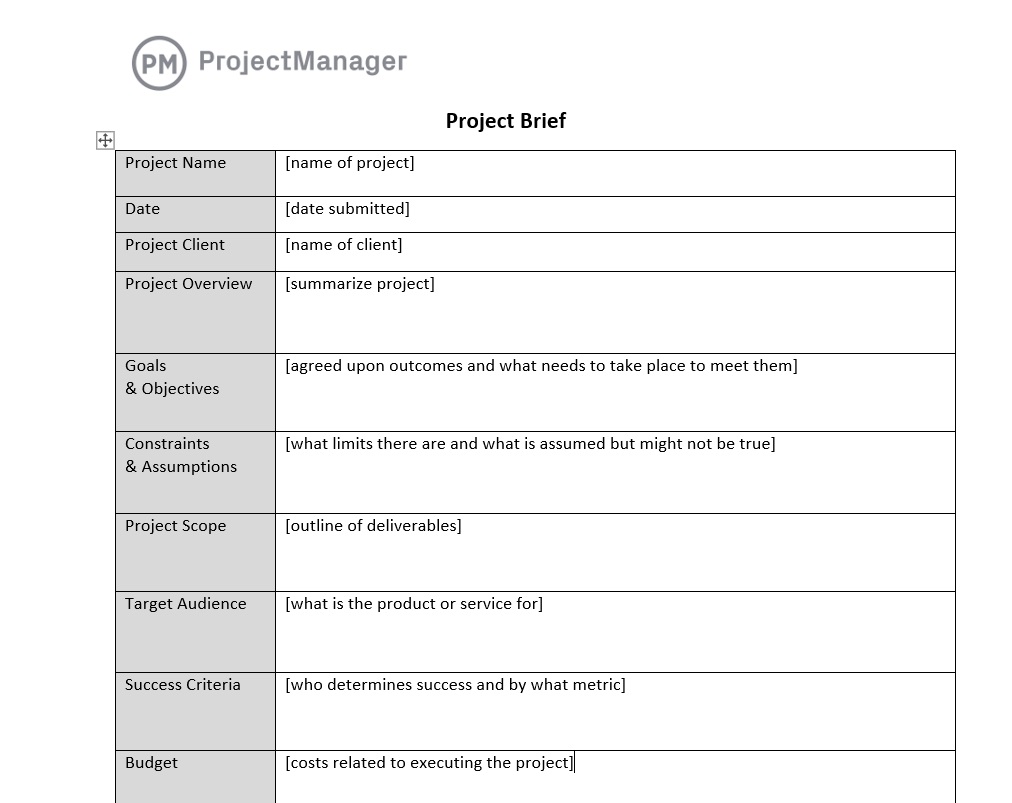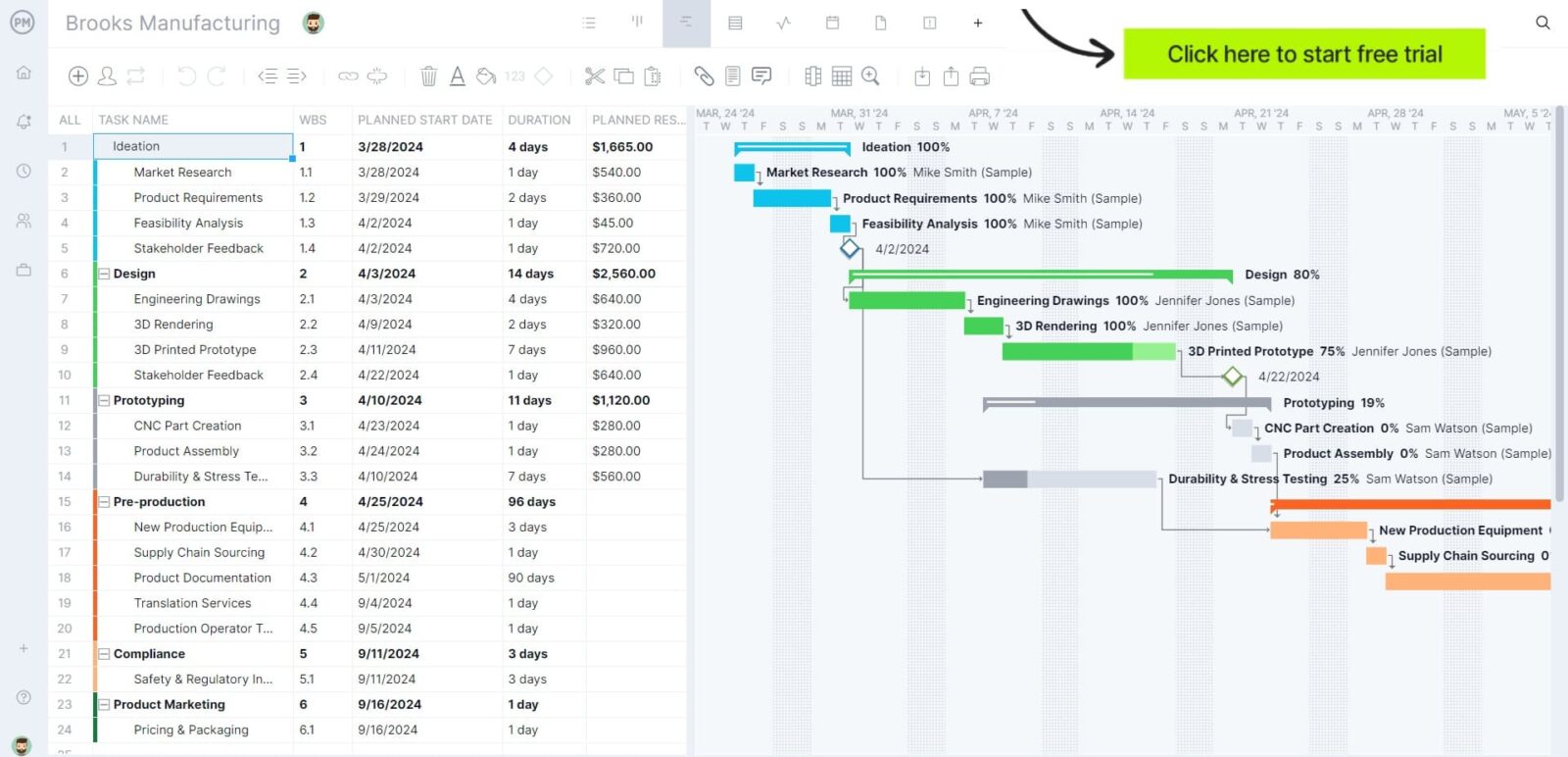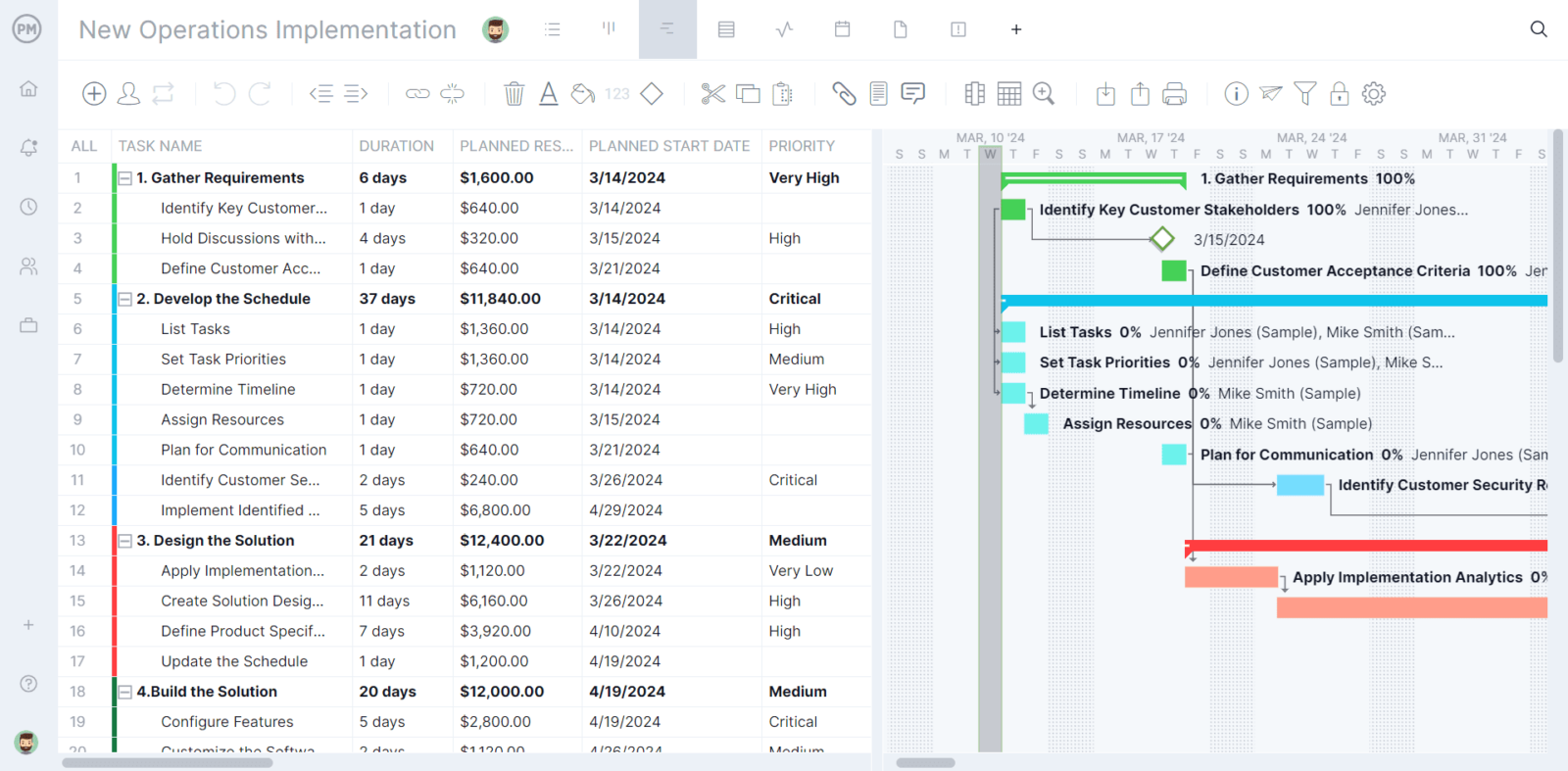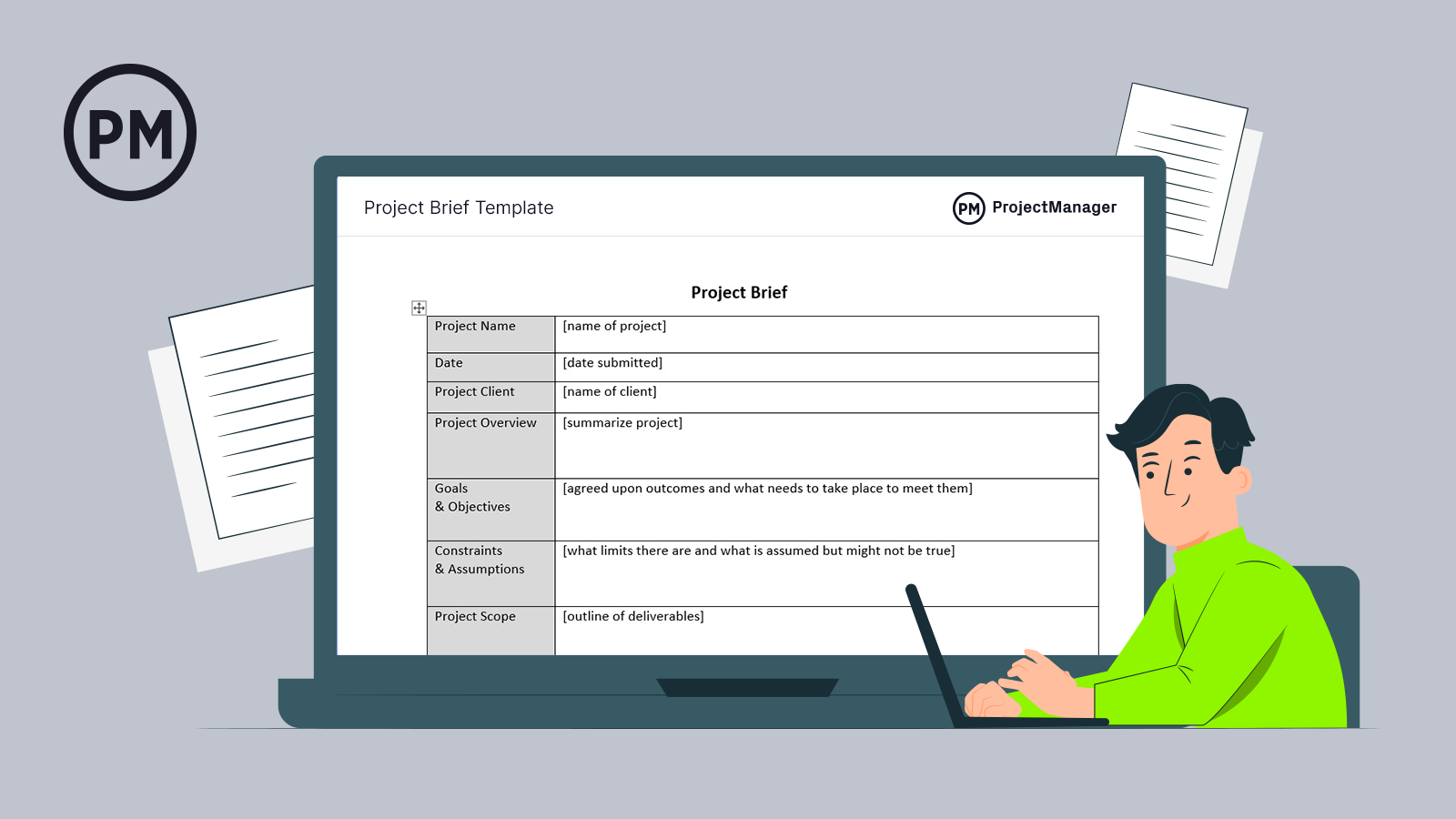Whether you’re starting to work on a project plan or need to explain the project in broad terms to your stakeholders, you need a project brief to define all the main points. It’s the best way to inform and communicate the project summary.
Get a head start on your project brief by downloading our free project brief template—all you’ll need to do is fill in the details.
What Is a Project Brief Template?
A project brief outlines the approach and process of a project. It summarizes the main parts of a project, including whatever requirements there are. As the name implies, the document is meant to be brief! This is not the place to dive deep into the finer details.

Instead, the project brief is where the major kinks are worked out. Here, you’ll determine the objectives, goals, scope, major deliverables, milestones, process and resources. By laying this out, you ensure that everyone is on the same page for the more complex project plan.
The project brief can be seen as a summary of your project plan. It will talk about roughly the same elements, only in an abbreviated form. For example, the project plan will go into the budget, the communication plan and much more. The project brief tends to focus solely on the objective, schedule and scope, although it can include the target audience as well.
Why Do You Need a Project Brief Template?
Use a project brief to capture the main elements of your project and communicate them to the project team and stakeholders. Through clear communication, your project will run smoothly.
The project brief also lays the groundwork for the larger project plan. By getting the broad strokes down and defining the project from a high-level view, planning is easier because you have a clear sense of the direction it needs to take.
Using our project brief template helps you make sure you don’t overlook any important details as you define the end goal of the project. This template will sketch out details such as the client, project objectives and details. All of which is key to managing a successful project.
The project brief template sketches the broad strokes, but to get the full picture and better communicate the plan to your team and stakeholders, project management software is required. ProjectManager builds your project scope into a schedule. Our Gantt chart does more than populate a project timeline, it automatically calculates your critical path and then saves the plan to use as a ruler to measure your actual progress during execution. Create your budget by adding planned resource costs, which can also be compared to actual costs once the project begins. Our tool turns your proposal into a successful project.

Who Uses a Project Brief Template?
The project brief is used by the project manager to inform the project stakeholder and the project team about the main goal of the project. It is prepared by the project manager and then reviewed by those who use it, including suppliers.
The final project brief is approved by the organization’s executives. It’s all part of the initiation phase of a project but is often referred to throughout the life cycle of the project. In a sense, it’s used by everyone in the project as a compass to make sure they’re all heading in the right direction.
How to Use Our Free Project Brief Template
Just follow these steps and you’ll have this project brief template ready to share with stakeholders and your team in no time.
Project Name and Date
The project name and date that the brief was made are located on the top right-hand side of the document. This identifies what it is and attaches it to one project, which is helpful when your organization is managing a program or portfolio. It also makes it easier to find after the project is completed; you may want to use the brief as historical data for a new, similar project.
Summary, Goals and Objectives
After that comes the meat of the project brief. It begins with the client for the project and then a summary of the project. Then, you input the goals and objectives of the project; in other words, the agreed upon outcomes and how you’re going to get there.
Constraints and Assumptions
Next, there’s a space to outline the constraints and assumptions of the project. These are the things that might limit your progress and other things you’re taking for granted that might end up surprising you. This is followed by the scope of the project, which outlines deliverables.
Target Audience and Responsible Parties
Whether you’re making a product or service, there’s a target audience and they must be defined in the project brief. Here, you can outline who they are and how the project meets a need they have. The next space is where you identify who is responsible for determining that the project is successful and by what criteria they will measure that success.
Budget and Timeline
While not a fully realized budget, there is a place for you to outline the costs associated with executing the project. There is also a timeline or schedule of events that will make up the project. This will show the duration of the project by making an accurate estimation of the time it will take between the start and the finish of the project.
How ProjectManager Turns Your Brief Into a Project
ProjectManager is an award-winning project management software that organizes tasks, teams and projects. Once stakeholders approve your brief and the team understands it, you have to execute it. Our online software helps you better plan, monitor and report on your project.

Once you have broken your final deliverable into tasks that get you there, manage them on the Gantt chart. The Gantt schedules your work, lets you link dependent tasks to avoid bottlenecks and breaks down the project into phases.
High-level views of the project’s performance and progress are available on the real-time dashboard, which does all the calculations for you and displays cost, project variant, workload and more in easy to read graphs and charts. One-click filterable reports keep stakeholders updated.

Other Templates to Help With Your Project Brief
ProjectManager has dozens of free project management templates that assist you over the life cycle of your project. Here are a few that can help you get your project brief together.
Project Budget Template
While your project brief will not go into detail about the budget, costs are important to outline. To get a jump on the financial component of your project, use our free project budget template. It outlines the cost of your project and helps you monitor your expenditure.
Project Charter Template
Because you need to define the goals of the project when composing a brief, it can be very helpful to use our free project charter template. The project charter defines the vision of the project, it’s objective, scope and deliverables—all relevant to your project brief.
Statement of Work Template
The free statement of work template is another means to collect all the pertinent information about your project and, in turn, help you develop the project brief. It speaks to the activities, deliverables and timetable to get all this work done.
Related Content
ProjectManager is also an online hub that publishes hundreds of blogs, tutorial videos and guidebooks on every aspect of project management. It’s a great resource for newcomers and seasoned professionals. Here are just a few of the pieces on the site that are relevant to creating a project brief.
- Project Documentation: 15 Essential Project Documents
- Project Development: Everything You Need to Get Started
- Premortem on Projects: How to Do It & Why
- Cost Estimation for Projects: How to Estimate Accurately
ProjectManager is a cloud-based tool that helps you plan, schedule, execute, monitor and report on your project to keep it on track and within budget. Our software gives you the features you need to turn your project brief into a successful project. Join the tens of thousands of teams who are already managing their projects with ProjectManager and take this free 30-day trial today.
